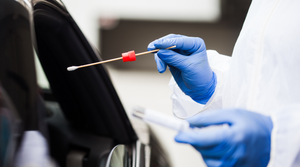Medical Device Labeling is Seriously Lagging
In Mary Weick-Brady’s estimation, the medical device labeling system is lagging behind CDER by at least 10 years. And, she says, device labels need a rethink. “There is inconsistency,” says the CDRH Senior Policy Advisor at the Office of the Center Director. Brady is referring to labeling on multiple levels: how different companies approach content and format of labeling, how FDA reviews labeling, the varying lengths of instructions for use, and what happens to those instructions once they leave the manufacturing floor.
March 13, 2013
In Mary Weick-Brady’s estimation, the medical device labeling system is lagging behind CDER by at least 10 years. And, she says, device labels need a rethink. “There is inconsistency,” says the CDRH Senior Policy Advisor at the Office of the Center Director. Brady is referring to labeling on multiple levels: how different companies approach content and format of labeling, how FDA reviews labeling, the varying lengths of instructions for use, and what happens to those instructions once they leave the manufacturing floor. Inconsistencies add to caregiver and patient confusion.
A main concern to Brady, who is a registered nurse, is that patients might not know that they can and should report labeling errors to FDA. “Patients often don’t see labeling as part of the device, and so are unlikely to report use error,” she says. “People don’t tend to report these problems, because they are more likely to blame themselves for not understanding a label.”
With those challenges in mind, CDRH is about to give labeling its due. On April 29, the agency will host a public workshop to explore ideas for how to improve the labeling for medical devices.
The goals of the workshop center on responding to the needs of end users. Practitioners, for example, prefer a standardized format. Users, says Brady, “want something simple.” But Brady notes that that clearer guidelines for device labeling will also benefit manufacturers. “An added benefit is that shared FDA and industry expectations for labeling will focus FDA’s premarket review of labeling,” she says.
Up for debate are three key ideas the Brady wants to present to industry representatives, patient organizations, regulatory experts, and lay people, as follows:
Development of a standard content and format.
The use of a shortened or quick guide version of labeling.
Home use device labeling repository and ways of accessing labeling.
A standardized format has yielded good results in the pharmaceutical industry, which has at least 10 years of data to back up the claims. “We started addressing labeling back in 1995 and we need to be looking at how to be consistent with what [CDER] is doing.” However, Brady readily admits that devices are different from drugs. They are more complex and more varied.
Developing standard elements for device labeling poses a significant challenge, as would designing a shortened label, or setting up a home use labeling repository, Brady notes. She is not suggesting device makers can design out all risk. There is no way, for example, to guarantee a home user will read instructions for use. However, Brady says that FDA is taking the long view. It wants to work closely with industry, health care practitioners, and other end users to address these challenges.
“This is a different way of thinking,” she says, mentioning that during the workshop, she plans to present the results of a pilot study developed with medical device industry partners and FDA. The pilot found problems with the form used to collect labeling information. “We’re learning from experience specific to devices so we can make the process of providing labeling information to FDA as painless as possible,” she says.
As far as the future of labeling for medical devices, Brady hopes the workshop will yield ideas for better design. If you were hoping to attend the workshop, I’m sorry to disappoint you, but its full. However, interested stakeholders can still register for the wait list or attend virtually
Brady insists that the workshop is the start of a conversation, not the end of it. She suggests that as medical device firms move forward, that they consider labeling at the same time as the rest of design and human factors elements. “Labeling is just as important,” she says.
--Heather Thompson is editor-in-chief of MD+DI
More on Medical Device Labeling
Medical Device Labeling: CDRH Plans Drug-like Labels for Devices
FDA’s Unique Device Identifier Program is a Prince Masquerading as a Frog
You May Also Like


